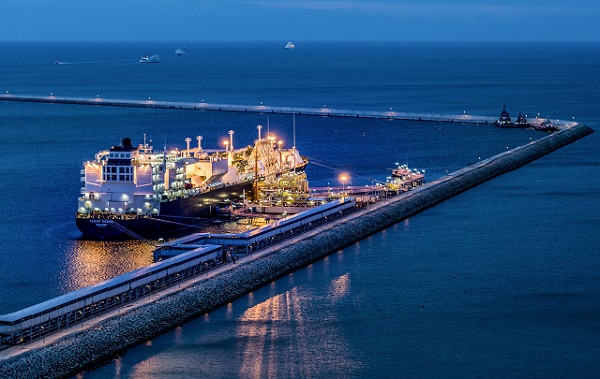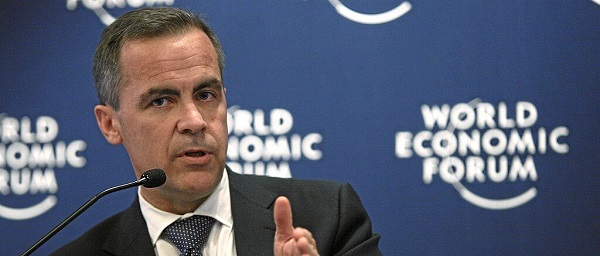Energy
US LNG uncertainty is a reminder of lost Canadian opportunities

From Resource Works
Canada has missed opportunities to supply Europe with LNG due to political missteps and regulatory barriers, despite having the resources and potential.
For almost three years now, Europe has not been able to figure out how it will replace the cheap, plentiful supply of Russian gas it once enjoyed. Since Russia invaded Ukraine, the EU member states have made drastic moves to curtail their reliance on Russian energy, specifically Russian gas.
In an ideal world, the diversification of the EU’s energy supply would have been Canada’s golden opportunity to use its vast LNG capabilities to fill the gap.
Canada has all the right resources at its disposal to become one of the EU’s premier energy sources, with enormous natural gas reserves lying in the ground and shores upon three of the world’s four oceans. The problem is that Canada lacks both the right infrastructure and the necessary political will to get it built.
The fact that Canada is not a favored supplier of LNG to Europe is the consequence of political missteps and a lack of vision at the highest levels of government. It was reported by the Financial Times that outgoing United States President Joe Biden’s freeze on new LNG export permits and clashes with activists have created uncertainty over future supply growth.
Missteps and onerous regulatory barriers have kept Canada shackled and unable to reach its full potential, leaving us on the sidelines as other countries take the place that should have been Canada’s as an energy supplier for the democratic world.
To this day, European leaders like Greek Prime Minister Kyriakos Mitsotakis, German Chancellor Olaf Scholz, and Polish President Andrzej Duda have indicated their openness to adding Canadian LNG to their domestic supply.
However, no plans for supplying Canadian LNG to Europe have come to fruition. The absence of any commitment from the federal government to take those possibilities seriously is the result of decisions that now look like major mistakes in hindsight.
Two of these are cancelled energy projects on the Atlantic coast: the Energy East oil pipeline and the proposed expansion of an LNG terminal in New Brunswick.
Canada’s Pacific coast is now a hub of LNG development, with three planned facilities well underway, and there are hungry markets in Asia ready to receive their products. It is a shame that the Atlantic coast is being left behind during Canada’s burgeoning LNG renaissance. The economic situation in the Maritimes has long been challenging, leading to emigration to the Western provinces and stagnation back at home.
LNG projects in British Columbia have proven to be job machines and drivers of economic revitalization in formerly impoverished regions that were gutted when fishing, mining, and forestry went downhill in the 1980s.
The potential to both help Atlantic Canada level back up economically while becoming the bridge for energy exports to Europe was halted by the cancellation of the Energy East pipeline and a proposed LNG terminal in Saint John, New Brunswick.
Proposed by TransCanada (since renamed to TC Energy) to the National Energy Board in 2014, Energy East would have been a 4,600-kilometer pipeline with the capacity to transport over a million barrels of crude oil from Alberta to refineries in New Brunswick and Quebec. While it is true that Europe is more interested in LNG than crude oil, the completion of one great project encourages more and could have gotten the ball rolling on further energy infrastructure.
Had Energy East been constructed, it would have served as a symbol to investors and energy industry players that Canada was serious about west-to-east projects. Unfortunately, in 2017, TransCanada withdrew from the project due to regulatory disagreements and uncertainty.
In 2019, the federal government passed Bill C-69, AKA the “no more pipelines” law, leading to even more complex and restrictive regulations for new energy projects. When there should have been momentum on energy infrastructure building, there came only more cascading bad news.
A proposed expansion of Repsol’s LNG terminal in Saint John, New Brunswick, another potential gateway for Canadian energy to get through to Europe, was abandoned due to the projected high costs and poor business case.
The idea of LNG on the East Coast making for a poor business case has been repeated by the federal government many times. However, in documents accessed by The Logic, it was revealed that Global Affairs Canada has, in fact, stated the opposite, and that there was great potential to increase rail and pipeline networks on the Atlantic.
Furthermore, Canada is capable of shipping LNG from the Western provinces to the East Coast because of our access to the vast pipeline networks of the United States.
As a result of these regrettable decisions, Canadians can only watch as lost opportunities to provide LNG to the democratic world are filled by other countries. Every downturn or disruption in the energy exports of other countries is a sore reminder of Canada’s lost opportunities.
Canada needs more vision, certainty, and drive when it comes to building the future of Canadian energy. In the words of Newfoundland and Labrador Premier Andrew Furey, “We will be all in on oil and gas for decades and decades to come…because the world needs us to be.”
Energy
China undermining American energy independence, report says

From The Center Square
By
The Chinese Communist Party is exploiting the left’s green energy movement to hurt American energy independence, according to a new report from State Armor.
Michael Lucci, founder and CEO of State Armor, says the report shows how Energy Foundation China funds green energy initiatives that make America more reliant on China, especially on technology with known vulnerabilities.
“Our report exposes how Energy Foundation China functions not as an independent nonprofit, but as a vehicle advancing the strategic interests of the Chinese Communist Party by funding U.S. green energy initiatives to shift American supply chains toward Beijing and undermine our energy security,” Lucci said in a statement before the Senate Judiciary Subcommittee’s hearing on Wednesday titled “Enter the Dragon – China and the Left’s Lawfare Against American Energy Dominance.”
Lucci said the group’s operations represent a textbook example of Chinese influence in America.
“This is a very good example of how the Chinese Communist Party operates influence operations within the United States. I would actually describe it as a perfect case study from their perspective,” he told The Center Square in a phone interview. “They’re using American money to leverage American policy changes that make the American energy grid dependent upon China.”
Lucci said one of the most concerning findings is that China-backed technology entering the U.S. power grid includes components with “undisclosed back doors” – posing a direct threat to the power grid.
“These are not actually green tech technologies. They’re red technologies,” he said. “We are finding – and this is open-source news reporting – they have undisclosed back doors in them. They’re described in a Reuters article as rogue communication devices… another way to describe that is kill switches.”
Lucci said China exploits American political divisions on energy policy to insert these technologies under the guise of environmental progress.
“Yes, and it’s very crafty,” he said. “We are not addressing the fact that these green technologies are red. Technologies controlled by the Communist Party of China should be out of the question.”
Although Lucci sees a future for carbon-free energy sources in the United States – particularly nuclear and solar energy – he doesn’t think the country should use technology from a foreign adversary to do it.
“It cannot be Chinese solar inverters that are reported in Reuters six weeks ago as having undisclosed back doors,” he said. “It cannot be Chinese batteries going into the grid … that allow them to sabotage our grid.”
Lucci said energy is a national security issue, and the United States is in a far better position to achieve energy independence than China.
“We are luckily endowed with energy independence if we choose to have it. China is not endowed with that luxury,” he said. “They’re poor in natural resources. We’re very well endowed – one of the best – with natural resources for energy production.”
He said that’s why China continues to build coal plants – and some of that coal comes from Australia – while pushing the United States to use solar energy.
“It’s very foolish of us to just make ourselves dependent on their technologies that we don’t need, and which are coming with embedded back doors that give them actual control over our energy grid,” he said.
Lucci says lawmakers at both the state and federal levels need to respond to this threat quickly.
“The executive branch should look at whether Energy Foundation China is operating as an unregistered foreign agent,” he said. “State attorneys general should be looking at these back doors that are going into our power grid – undisclosed back doors. That’s consumer fraud. That’s a deceptive trade practice.”
Energy
Carney’s Bill C-5 will likely make things worse—not better

From the Fraser Institute
By Niels Veldhuis and Jason Clemens
The Carney government’s signature legislation in its first post-election session of Parliament—Bill C-5, known as the Building Canada Act—recently passed the Senate for final approval, and is now law. It gives the government unprecedented powers and will likely make Canada even less attractive to investment than it is now, making a bad situation even worse.
Over the past 10 years, Canada has increasingly become known as a country that is un-investable, where it’s nearly impossible to get large and important projects, from pipelines to mines, approved. Even simple single-site redevelopment projects can take a decade to receive rezoning approval. It’s one of the primary reasons why Canada has experienced a mass exodus of investment capital, some $387 billion from 2015 to 2023. And from 2014 to 2023, the latest year of comparable data, investment per worker (excluding residential construction and adjusted for inflation) dropped by 19.3 per cent, from $20,310 to $16,386 (in 2017 dollars).
In theory, Bill C-5 will help speed up the approval process for projects deemed to be in the “national interest.” But the cabinet (and in practical terms, the prime minister) will determine the “national interest,” not the private sector. The bill also allows the cabinet to override existing laws, regulations and guidelines to facilitate investment and the building of projects such as pipelines, mines and power transmission lines. At a time when Canada is known for not being able to get large projects done, many are applauding this new approach, and indeed the bill passed with the support of the Opposition Conservatives.
But basically, it will allow the cabinet to go around nearly every existing hurdle impeding or preventing large project developments, and the list of hurdles is extensive: Bill C-69 (which governs the approval process for large infrastructure projects including pipelines), Bill C-48 (which effectively bans oil tankers off the west coast), the federal cap on greenhouse gas emissions for only the oil and gas sector (which effectively means a cap or even reductions in production), a quasi carbon tax on fuel (called the Clean Fuels Standard), and so on.
Bill C-5 will not change any of these problematic laws and regulations. It simply will allow the cabinet to choose when and where they’re applied. This is cronyism at its worst and opens up the Carney government to significant risks of favouritism and even corruption.
Consider firms interested in pursuing large projects. If the bill becomes the law of the land, there won’t be a new, better and more transparent process to follow that improves the general economic environment for all entrepreneurs and businesses. Instead, there will be a cabinet (i.e. politicians) with new extraordinary powers that firms can lobby to convince that their project is in the “national interest.”
Indeed, according to some reports, some senators are referring to Bill C-5 as the “trust me” law, meaning that because there aren’t enough details and guardrails within the legislation, senators who vote in favour are effectively “trusting” Prime Minister Carney and his cabinet to do the right thing, effectively and consistently over time.
Consider the ambiguity in the legislation and how it empowers discretionary decisions by the cabinet. According to the legislation, cabinet “may consider any factor” it “considers relevant, including the extent to which the project can… strengthen Canada’s autonomy, resilience and security” or “provide economic benefits to Canada” or “advance the interests of Indigenous peoples” or “contribute to clean growth and to meeting Canada’s objectives with respect to climate change.”
With this type of “criteria,” nearly anything cabinet or the prime minister can dream up could be deemed in the “national interest” and therefore provide the prime minister with unprecedented and near unilateral powers.
In the preamble to the legislation, the government said it wants an accelerated approval process, which “enhances regulatory certainty and investor confidence.” In all likelihood, Bill C-5 will do the opposite. It will put more power in the hands of a very few in government, lead to cronyism, risks outright corruption, and make Canada even less attractive to investment.
-

 Energy1 day ago
Energy1 day agoChina undermining American energy independence, report says
-

 Brownstone Institute2 days ago
Brownstone Institute2 days agoFDA Exposed: Hundreds of Drugs Approved without Proof They Work
-

 Business1 day ago
Business1 day agoTrump on Canada tariff deadline: ‘We can do whatever we want’
-

 Automotive1 day ago
Automotive1 day agoElectric vehicle sales are falling hard in BC, and it is time to recognize reality.
-

 Business1 day ago
Business1 day agoEurope backs off greenwashing rules — Canada should take note
-

 Automotive1 day ago
Automotive1 day agoPower Struggle: Electric vehicles and reality
-

 Business9 hours ago
Business9 hours agoCanada Caves: Carney ditches digital services tax after criticism from Trump
-

 Alberta2 hours ago
Alberta2 hours agoAlberta judge sides with LGBT activists, allows ‘gender transitions’ for kids to continue






